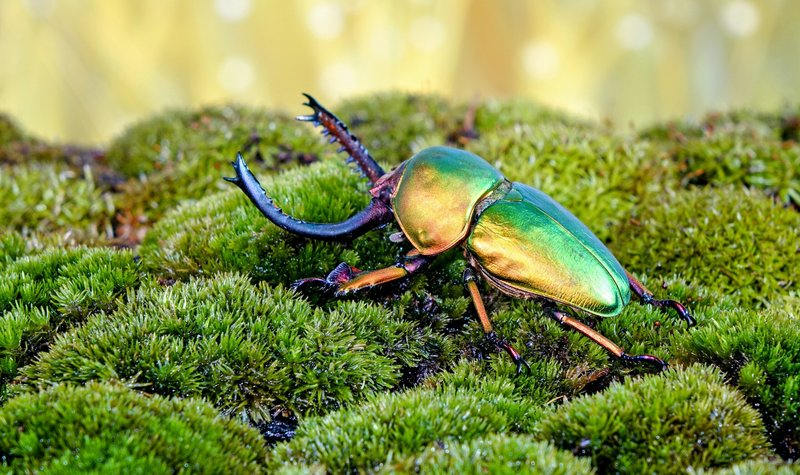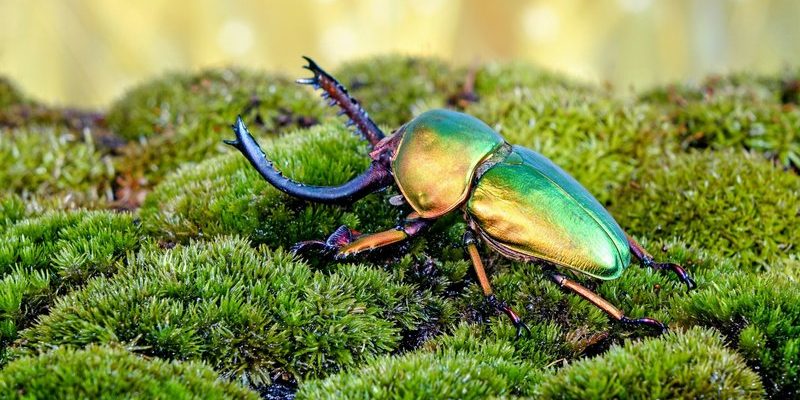
Let’s take a little trip through time and explore the fascinating history of these remarkable creatures. How did they evolve? What adaptations helped them survive through millennia? We’ll dig into their roots, their roles in ecosystems, and how they’ve changed alongside the Earth itself. So grab a cup of coffee, and let’s unravel the story of the beetle!
A Glimpse into Beetle Origins
Beetles belong to the order Coleoptera, which is derived from the Greek words *koleos* (meaning sheath) and *ptera* (meaning wings). This name perfectly describes them because beetles are characterized by their hard outer shell that covers their wings. The first beetles date back about 300 million years to the Carboniferous period. That’s right—beetles were strutting their stuff long before the dinosaurs roamed the Earth!
During this time, the planet was covered in dense forests, creating an ideal habitat for beetles to thrive. They evolved various adaptations, like a strong exoskeleton for protection against predators and the ability to consume wood and other plant materials. Imagine a beetle munching through a piece of ancient wood—its mouthparts perfectly designed for the task.
Over millions of years, beetles diversified, leading to the astonishing variety we see today. They adapted to various environments, including forests, grasslands, deserts, and even aquatic habitats. From the vibrant colors of ladybugs to the impressive horns of stag beetles, they’ve specialized in numerous ways to survive and reproduce in their respective ecosystems.
The Importance of Beetles in Ecosystems
You might be wondering, “What do beetles actually do?” Well, they play vital roles in our ecosystems. Beetles are essential decomposers; they help break down organic material, which returns nutrients to the soil. This process is crucial for plant growth, and without beetles, our earth would be a much less fertile place.
- Pollination: Some beetles, like the scarab beetle, pollinate flowers while searching for food. They move from bloom to bloom, helping plants reproduce.
- Predation: Many beetles are predators themselves, feeding on pests that harm crops and gardens. Ladybugs, for example, feast on aphids—making them natural pest control agents.
- Food Source: Beetles also serve as food for birds, mammals, and other insects, contributing to the food chain and maintaining ecological balance.
In short, beetles are not only fascinating creatures; they are also integral to the health of our planet. Their presence is a sign of a thriving ecosystem, and their absence could spell trouble for many species, including humans.
Evolving Through Time: Adaptations and Diversification
As the Earth’s environments changed—think climate shifts, mountain formations, and desert expansions—beetles adapted in remarkable ways. One of the best examples of this is the weevil, a type of beetle with an elongated snout. Weevils have adapted to feed on a wide variety of plants, allowing them to thrive in many environments. They’ve learned to co-exist with the plants they feed on, which is a real balancing act in nature.
In contrast, dung beetles have gained a reputation for recycling animal waste. These industrious beetles roll dung into balls, which they use as food or nesting material. They’re not just cleaning up the environment; they also play a critical role in nutrient cycling. Imagine the amount of organic matter they process, helping to keep the ecosystem in check!
Beetles have also developed impressive strategies for defense. Many species exhibit bright colors to warn predators, while others have evolved camouflage to blend in with their surroundings. This ability to adapt to different threats has allowed beetles to survive in a variety of habitats.
The Fascination with Beetles in Culture
Beetles aren’t just important in nature; they’ve also captured human imagination and cultural significance throughout history. In ancient Egypt, the scarab beetle was a symbol of rebirth and regeneration. People would often carry scarab amulets for protection and good luck. Imagine a tiny beetle, carved in stone, resting in someone’s hand as a charm!
In modern times, beetles have inspired artists, designers, and even fashion trends. The vibrant colors and unique patterns of beetles, like the jewel beetle, have made their way into various art forms. Moreover, some cultures even use beetles in jewelry, celebrating their beauty and diversity.
Enthusiasts collect beetles, cherishing them for their unique shapes and colors. Whether displayed in shadow boxes or used in handmade crafts, beetles continue to find their place in human culture.
Beetles in Threatened Ecosystems and Conservation Efforts
Despite their resilience, many beetle species face threats today. Habitat loss from urban development, agriculture, and climate change impacts beetle populations around the world. Some species, like the American bumblebee beetle, have seen drastic declines. If we’re not careful, we might lose some of these incredible creatures!
Conservation efforts are underway to protect beetle habitats and promote biodiversity. Scientists are conducting research to understand better how climate change influences beetle populations and what we can do to mitigate these effects. Here’s what conservationists are focusing on:
- Habitat Restoration: Creating and maintaining natural habitats helps support local beetle populations.
- Mitigating Climate Change: Reducing greenhouse gas emissions can help protect ecosystems that beetles rely on.
- Public Awareness: Educating people about the importance of beetles can foster appreciation and support for conservation initiatives.
By taking action, we can help ensure that beetles continue to thrive. After all, every little creature plays a part in the grand symphony of life.
The Future of Beetles: A Fascinating Journey Ahead
As we look to the future, beetles will undoubtedly continue to adapt and evolve. Scientists are studying their genetic makeup to understand how they respond to environmental changes. This research could be key in predicting how beetle populations might shift in response to ongoing climate challenges.
You might also be wondering how beetles are contributing to innovations in technology and medicine. For instance, researchers are exploring the use of beetle-inspired designs in robotics. Their unique structures might inform the creation of more efficient machines. Isn’t it fascinating how nature can inspire technology?
In conclusion, the journey of the beetle is a testament to resilience, adaptation, and the intricate web of life on our planet. By appreciating these tiny giants and recognizing their importance, we can take steps to protect them for generations to come. The story of the beetle is far from over; it’s just getting started!

